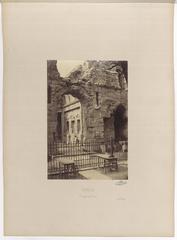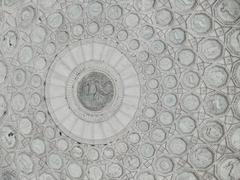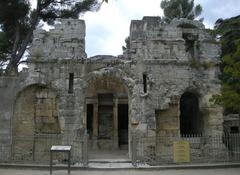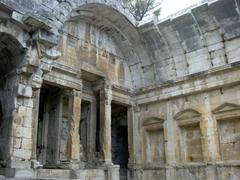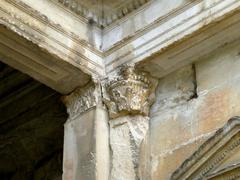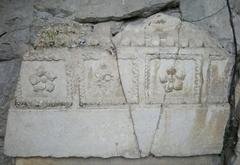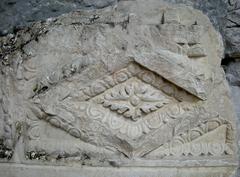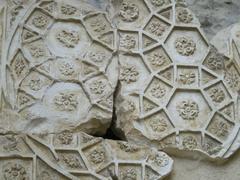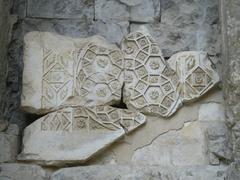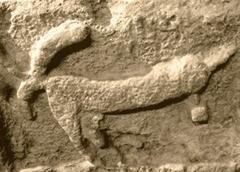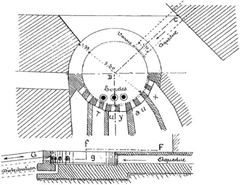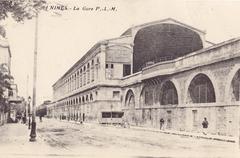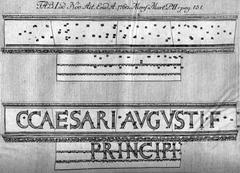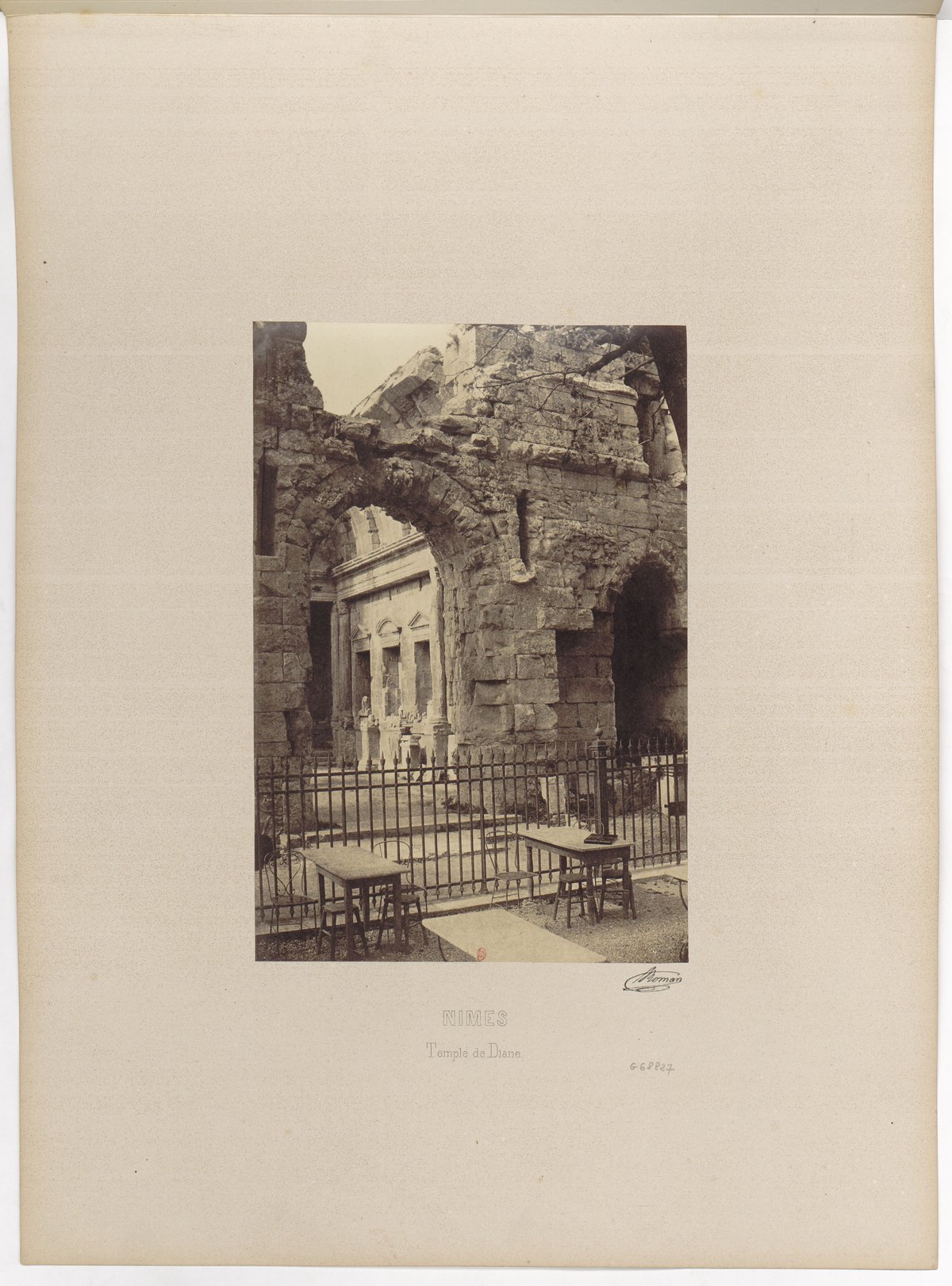
Guide to Visiting the Temple of Diana, Nîmes, France
Date: 17/08/2024
Introduction
Nestled within the picturesque city of Nîmes, France, the Temple of Diana stands as a mysterious relic from the Roman era. Despite its name, the purpose of this ancient structure remains a topic of debate among historians and archaeologists. Believed to have been constructed during the reign of Augustus in the 1st century BCE, the temple is a testament to Roman engineering and architectural prowess. Its strategic location on the Via Domitia, the first Roman road built in Gaul, highlights Nîmes’ significance as a thriving Roman colony (The Crazy Tourist). Visitors to this enigmatic site are transported back in time as they explore its ruins, which have withstood centuries of change and repurposing. From its possible function as a library or meeting hall to its transformation into a church during medieval times, the Temple of Diana offers a fascinating glimpse into the past. Today, it remains an integral part of Nîmes’ rich cultural heritage, attracting history enthusiasts and casual visitors alike.
Table of Contents
History of the Temple of Diana, Nîmes, France
Roman Origins
The Temple of Diana, located in the picturesque city of Nîmes, France, is an enigmatic relic from the Roman era. Despite its name, the exact purpose of the building remains a subject of debate among historians and archaeologists. The temple is believed to have been constructed during the reign of Augustus in the 1st century BCE, a period when Nîmes, known as Nemausus, was a thriving Roman colony. The city was strategically positioned on the Via Domitia, the first Roman road built in Gaul, which connected Italy to Spain (The Crazy Tourist).
Architectural Features
The Temple of Diana is renowned for its architectural features, which include a long barrel vault that has partially collapsed over the centuries. The structure is composed of a main chamber flanked by passageways, with walls that bear centuries’ worth of graffiti. The main room contains fragments of expertly carved stonework, showcasing the high level of craftsmanship that went into its construction. The temple’s design is a testament to Roman engineering prowess, with its use of arches and vaults to create a durable and aesthetically pleasing structure (The Crazy Tourist).
Possible Functions
While the building is traditionally referred to as the Temple of Diana, there is little evidence to support the notion that it was dedicated to the Roman goddess of the hunt. Some scholars suggest that the structure may have served as a library or a meeting hall, given its proximity to the Jardins de la Fontaine, a public park that was once the site of a Roman sanctuary dedicated to Augustus. The presence of niches and alcoves within the temple supports the theory that it could have housed scrolls or statues, indicating its possible use as a repository of knowledge or a place of worship (The Crazy Tourist).
Medieval and Modern History
The Temple of Diana has experienced significant changes and damage over the centuries. During the medieval period, the building was repurposed for various uses, including as a church and a residence. A plaque near the entrance of the temple provides a detailed account of its history since medieval times, including how it was damaged by fire in the early modern age. Despite these challenges, the temple has managed to survive, albeit in a ruined state, and continues to be a site of historical and architectural interest (The Crazy Tourist).
Preservation Efforts
Efforts to preserve the Temple of Diana have been ongoing for many years. The French government and local authorities have undertaken various restoration projects to stabilize the structure and prevent further deterioration. These efforts have included reinforcing the remaining walls, clearing vegetation that threatens the integrity of the ruins, and installing informational plaques to educate visitors about the site’s historical significance. The temple is now part of the larger Jardins de la Fontaine complex, which was one of Europe’s first public parks when it opened in 1745 (The Crazy Tourist).
Cultural Significance
The Temple of Diana holds a special place in the cultural heritage of Nîmes. It is one of several Roman monuments in the city that have stood the test of time, alongside the Maison Carrée and the Roman amphitheatre, Les Arènes. These structures collectively highlight the city’s rich Roman past and its importance as a center of culture and commerce in ancient times. The temple’s mysterious origins and enduring presence continue to captivate the imagination of visitors and scholars alike, making it a must-see attraction for anyone interested in Roman history and architecture (The Crazy Tourist).
Visitor Information
Visiting Hours and Tickets
The Temple of Diana is located within the Jardins de la Fontaine, which is open to the public year-round, and there is no admission fee to visit the temple. Visitors can explore the ruins at any time during park hours, typically from dawn until dusk. No tickets are required to access the temple or its immediate surroundings.
Visitor Experience
Visitors to the Temple of Diana can explore the ruins and imagine what the structure might have looked like in its prime. The site is almost hidden behind a copse of pines on the west side of the Jardins de la Fontaine, adding to its allure and sense of discovery. The temple’s location within the gardens provides a serene and contemplative setting, allowing visitors to appreciate the beauty of both the natural and built environments. Informational plaques near the entrance offer insights into the temple’s history and significance, enhancing the visitor experience (The Crazy Tourist).
Accessibility and Tips
The Temple of Diana is easily accessible from the city center of Nîmes. The Jardins de la Fontaine, where the temple is located, is a short walk from other major attractions such as the Maison Carrée and Les Arènes. The gardens are open to the public year-round, and there is no admission fee to visit the temple. Visitors are encouraged to wear comfortable walking shoes, as the terrain around the ruins can be uneven. Additionally, bringing a camera is recommended, as the temple and its surroundings offer numerous photo opportunities (The Crazy Tourist).
Nearby Attractions
While visiting the Temple of Diana, consider exploring other nearby historical sites. The Maison Carrée, a remarkably well-preserved Roman temple, and Les Arènes, a grand Roman amphitheatre, are both within walking distance. These attractions, along with the Temple of Diana, offer a comprehensive glimpse into Nîmes’ rich Roman heritage.
FAQ
What are the visiting hours for the Temple of Diana?
The Temple of Diana is accessible during the opening hours of the Jardins de la Fontaine, typically from dawn until dusk.
How much are tickets to the Temple of Diana?
There is no admission fee to visit the Temple of Diana.
Are there guided tours available?
While there are no official guided tours specifically for the Temple of Diana, visitors can join general tours of Nîmes that include stops at the temple and other historical sites.
Is the Temple of Diana wheelchair accessible?
The terrain around the Temple of Diana can be uneven, which may pose challenges for wheelchair accessibility. However, the main pathways in the Jardins de la Fontaine are generally accessible.
Conclusion
In summary, the Temple of Diana in Nîmes is a fascinating historical site that offers a glimpse into the city’s Roman past. Its architectural features, mysterious origins, and enduring presence make it a compelling destination for history enthusiasts and casual visitors alike. Whether you are exploring the ruins, learning about its history from informational plaques, or simply enjoying the tranquil setting of the Jardins de la Fontaine, a visit to the Temple of Diana is sure to be a memorable experience.
For more information on Nîmes and its historical sites, download our mobile app Audiala, check out our other related posts, and follow us on social media for the latest updates.
References
- The Crazy Tourist, 2024, Title source url
